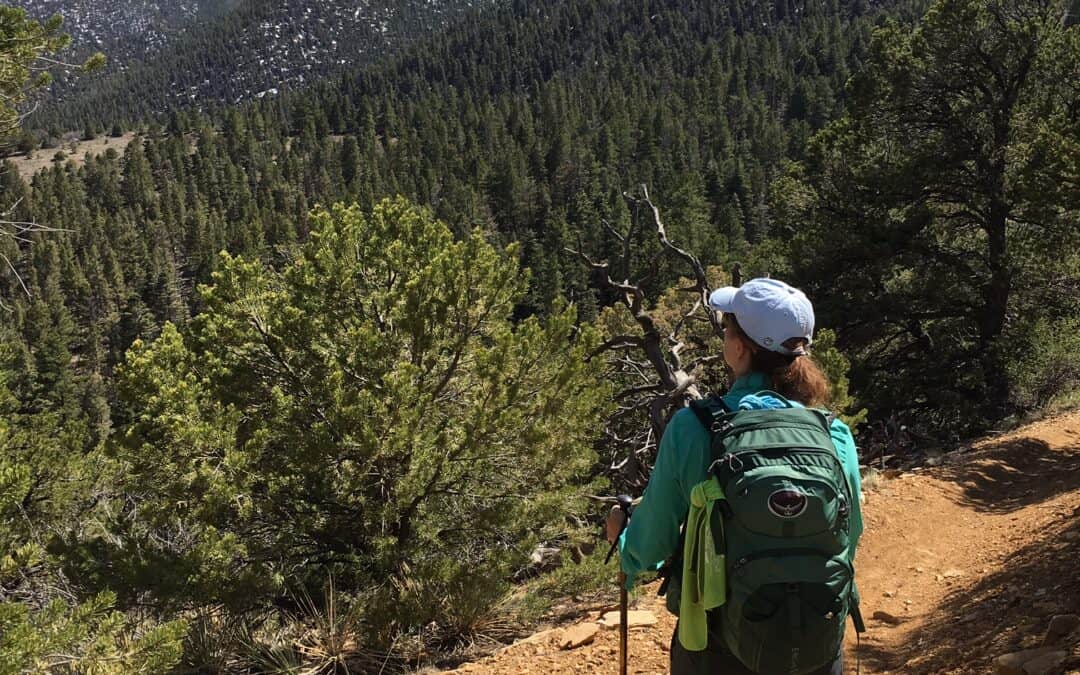I’ve recently researched new poles to replace my original pair, which is now more than 25 years old, ISO a lighter and more compact version. So I know that with dozens of trekking pole models on the market, selecting a pair can be overwhelming.
Here are a few key features to consider when selecting trekking poles.
1. Ease of adjustability and collapsibility
If you’re planning to do hikes with significant elevation changes, it’s helpful to adjust the pole length for the uphills (shorter) and downhills (longer). The ability to make these changes quickly and easily makes it more likely you’ll actually do it.
Being able to collapse a pole to a short length for stashing on scrambles and for travel is handy too.
2. Comfortable hand grip and its material
Definitely test the grip before picking poles – you’ll be able to tell quickly if the shape doesn’t suit your hand. Your fingers should wrap securely around the grip, though not touch the base of your hand. Also notice how the strap adjusts to cradle your hand and support it – watch for potential rubbing.
- Cork. Some people prefer cork grips, which absorb sweat and hold up well. My husband’s poles have cork grips, which he finds comfortable.
- Rubber. Others like rubber grips, which are a bit softer and are usually less expensive. My original Leki’s have rubber grips and fit my hands well.
- Foam is another option, though it doesn’t last as long as cork or rubber.
- Plastic grips are common on cheaper models, but they get slippery with sweat and don’t feel as comfortable as the other options.
3. Weight and durability of the pole shafts
Materials make a difference for this too, and they also influence cost.
- Carbon fiber. Poles made with this are lightweight and fairly strong, though they can be damaged more easily than some other materials. They’re also more expensive.
- Aluminum. Also pretty lightweight, and the “aircraft grade” heat-treated versions are more resilient than carbon fiber.
- Composite metals. These may be heavier than the other options, though less expensive.
If you foresee a lot of hilly hiking in your future, investing in higher quality poles may make the difference in how much you enjoy it.
And it’s far cheaper than knee surgery!
Once you’ve found the perfect poles, it’s time to get out and use them! Check out 5 tips for using trekking poles.
Subscribe To Trailblazer E-News
To get regular updates about how to get more active so you can make the most out of your experiences, just subscribe to my email newsletter below.
You're all set!


